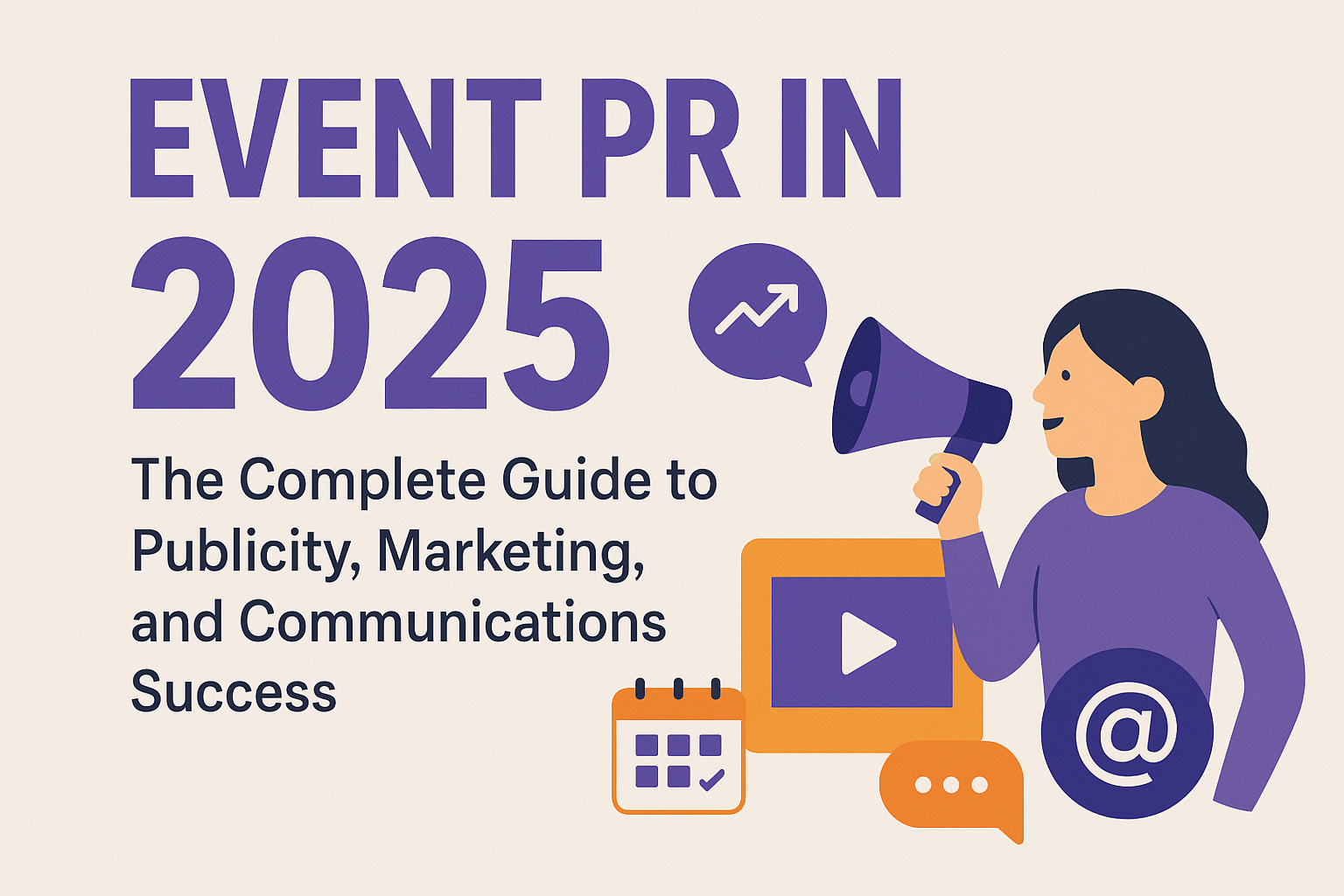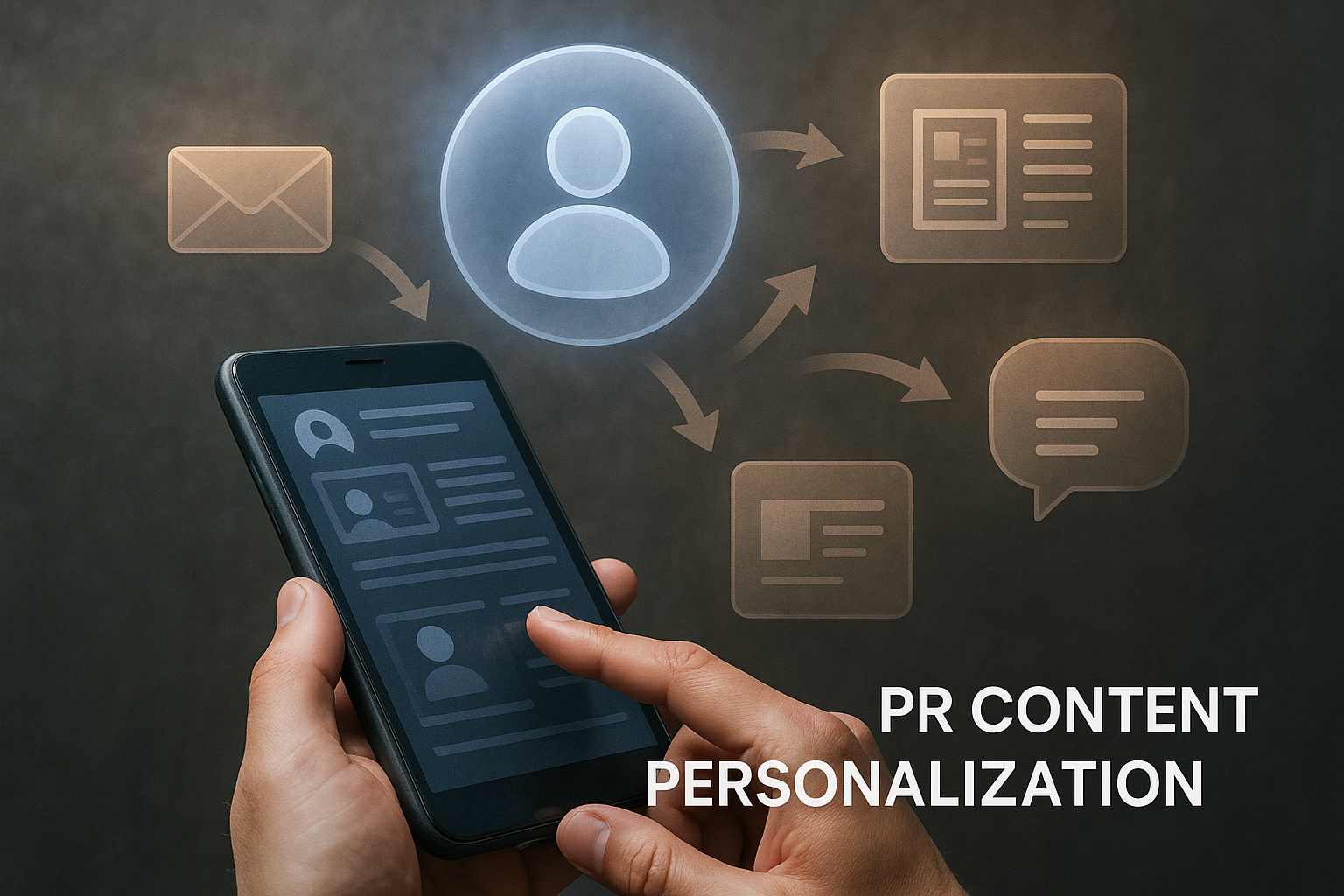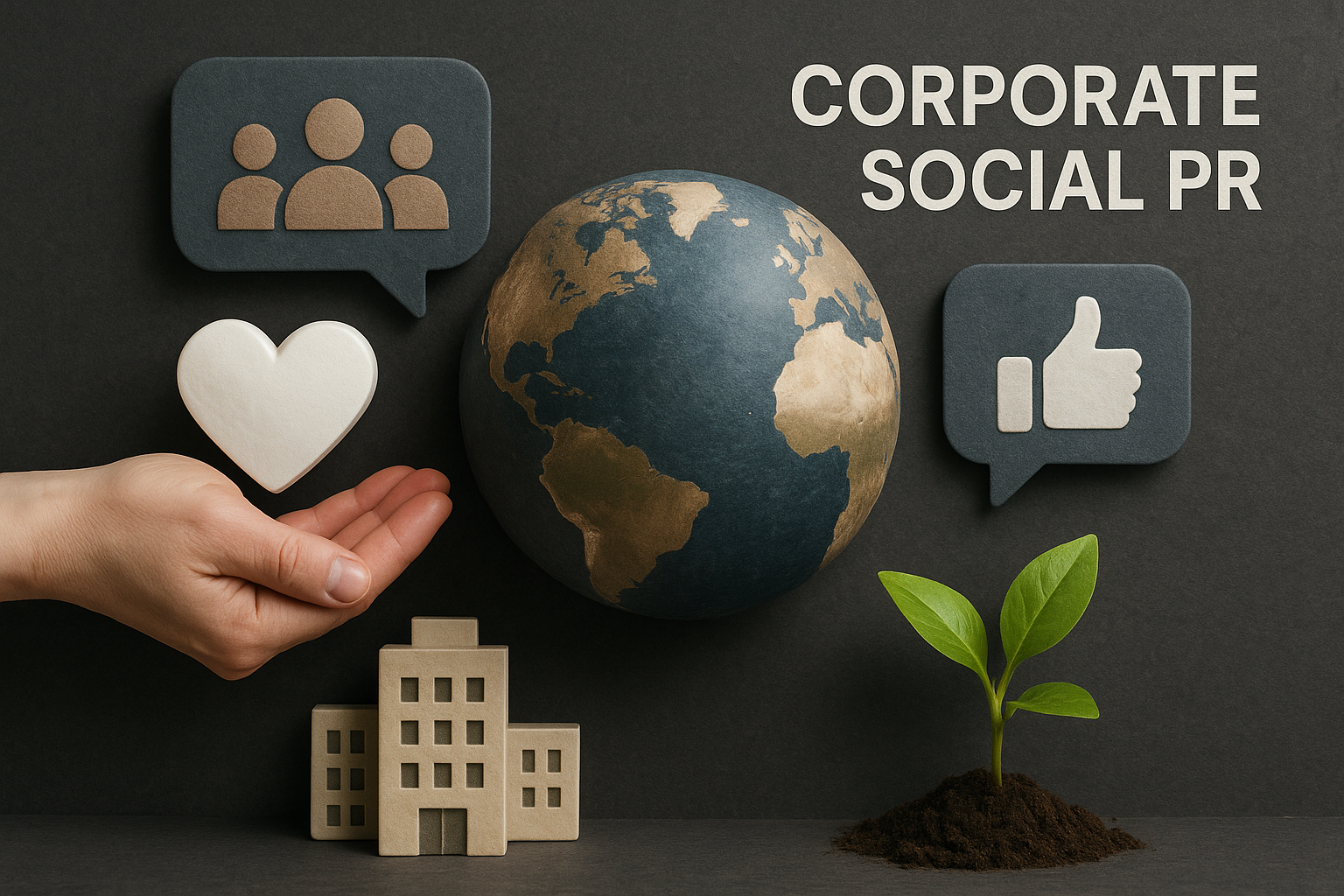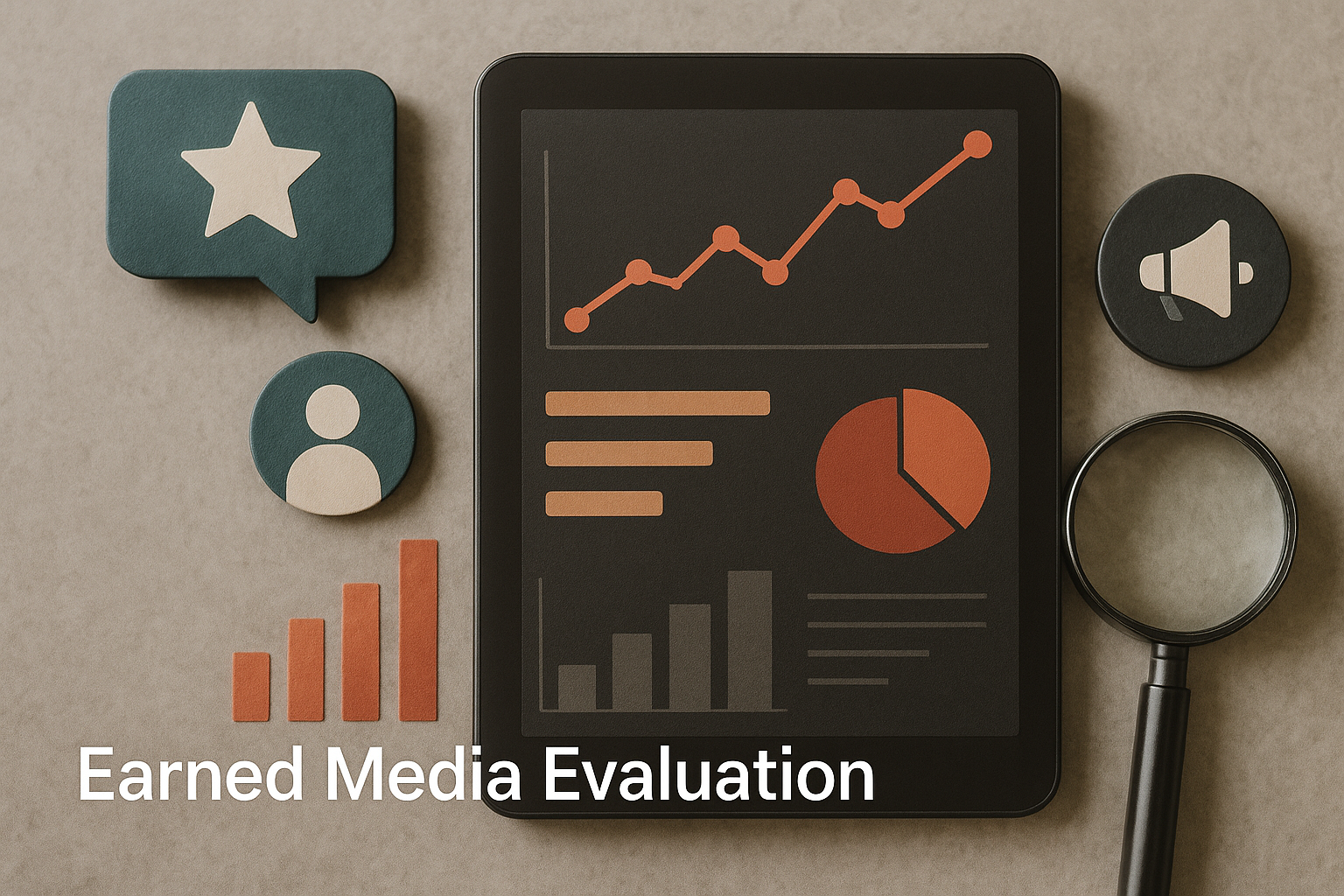How brands can leverage event publicity, event marketing, and public relations for events to build lasting authority and impact.
Let’s be honest—most events fade from memory faster than yesterday’s news cycle. You show up, you clap at the right moments, maybe you post a selfie. Then what? It’s gone. Unless, of course, there’s a story built around it. That story—the anticipation, the coverage, the chatter afterwards—isn’t random. It’s crafted. That’s Event PR.
Now, in 2025, this matters like never before. Why? Because attention is brutal currency. People are bombarded with invites, pop-ups, “unmissable” webinars, and “exclusive” festivals every single day. If your event doesn’t have a PR strategy, it’s not just competing—it’s invisible.
Here’s the twist though: it’s not about being the loudest. Anyone can throw money into ads or spam inboxes. Event PR is about shaping the meaning of the moment. It’s about making your event feel less like “just another thing” and more like an occasion that matters—something people trust, talk about, and attach to your brand.
And the landscape? Wild. Hybrid events are now expected, not exceptional. TikTok and Instagram can decide whether your event trends or tanks in a matter of hours. And audiences? They can smell empty hype from a mile away. They want realness, transparency, and something they can feel, not just attend.
That’s where PR earns its paycheck. It stretches the life of an event far beyond the stage lights. It turns a one-day splash into long-term authority.Agencies like Impact Authority come in here—not to manage the guest list or run the sound check—but to make sure your event’s story doesn’t die when the chairs are stacked away. Because an event without a narrative is like a sparkler in the wind—bright for a second, gone the next.
What is Event PR?
Alright, so what exactly is Event PR? Think of it as the voice of an event. The personality. The thing that tells the world: this isn’t just happening, this matters.
It’s not about shouting the date and location (that’s marketing’s job). It’s about framing the event so people connect with it. The journalists who cover it, the influencers who post about it, the attendees who share their experiences—they’re all part of the story Event PR sets in motion.
At its core, Event PR does three things:
- Gets noticed. It pushes past the noise so your audience actually hears about the event.
- Builds credibility. It gets respected voices—media, thought leaders, influencers—talking about it.
- Creates impact. It makes sure the event lives on in coverage, conversation, and content long after the curtains close.
But here’s the kicker: it doesn’t live in a silo. Event PR is a gear in the bigger PR machine. Done right, it doesn’t just promote one night—it feeds a brand’s entire communications strategy. That product launch? Suddenly it’s also a case study, a video highlight reel, a LinkedIn article. The afterglow becomes fuel for months of storytelling.
And since people mix these terms up all the time, let’s clear it up:
- Event PR = narrative and reputation.
- Event marketing = paid promos, email blasts, ads—the hustle to get bodies in seats.
- Event publicity = coverage you earn (journalists writing, influencers posting, bloggers buzzing).
They’re related, sure. But they’re not the same. Think of them like a three-part meal. Marketing is the appetizer—it draws you in. Publicity is the main course—it satisfies with credibility. And PR? PR is the aftertaste. It lingers. It defines how the whole experience is remembered.
That’s why Event PR isn’t fluff. It’s the difference between “Oh yeah, I went to that thing once” and “That event? It still shapes how I see the brand today.”
Why Event PR Matters in 2025
Here’s the truth: hosting an event in 2025 without PR is like whispering in a crowded stadium—you’ll get drowned out before you finish your first sentence.
The game has changed. Big time.
Take hybrid events. Two years ago, they were the “future.” Now? They’re the baseline. If you’re not livestreaming or creating digital-first moments for people who can’t be there in person, you’re already behind. And don’t even get me started on sustainability—audiences notice if your event is eco-conscious. Swap plastic bottles for refill stations, highlight local vendors, or offset carbon emissions—people talk about these details. Ignore them, and it can backfire faster than a bad hashtag.
Then there’s the influencer effect. Whether you like it or not, one Instagram story from the right person can outweigh a half-page feature in a glossy magazine. Audiences trust people more than logos. If an influencer’s genuine excitement comes through, you’ve just scored the kind of publicity no ad budget can buy.
But here’s where Event PR earns its stripes: trust. In 2025, audiences are skeptical by default. They’ve seen the scams, the overhyped launches, the “exclusive” experiences that weren’t exclusive at all. So credibility isn’t a nice-to-have—it’s the whole foundation. PR professionals know how to build that credibility brick by brick. They know which journalists to brief, which outlets will actually matter for your brand story, and how to shape a narrative that feels authentic instead of performative.
The smartest brands don’t see Event PR as a one-off campaign; they see it as a thread that ties into the bigger story of who they are. That’s why agencies like Impact Authority approach PR holistically. They don’t just chase headlines; they connect dots. If your event is a spark, PR is the oxygen that turns it into a flame—and then makes sure that flame lights up your brand for months to come.
Event Publicity
So let’s zoom in on one of the most misunderstood pieces of the puzzle: event publicity.
Publicity isn’t just “getting mentioned somewhere.” It’s about engineering the right kind of attention—the kind that feels earned, not forced. And in the event world, there are three levers to pull:
- Earned media. This is the gold standard. A journalist covers your product launch, an influencer posts an unprompted story, or a guest writes a glowing LinkedIn post. It’s not paid for—it’s credibility, plain and simple.
- Owned media. Your brand’s channels: the event microsite, newsletters, behind-the-scenes TikToks, live tweets. It’s where you control the narrative but still need to keep it authentic.
- Paid media. Ads, sponsored content, boosted posts. Useful, sure—but without the other two, it’s just noise.
The magic happens when these three overlap. Imagine announcing a fashion-tech event: your owned media teases the innovation, influencers showcase sneak peeks (earned), and a few well-placed paid ads amplify the buzz to targeted communities. Suddenly, it’s not just an event—it’s a cultural moment.
And let’s not forget partnerships. Aligning with the right media outlets or influencers can stretch your reach tenfold. But it has to make sense. A fintech summit doesn’t need a lifestyle blogger—it needs someone who commands respect in finance circles. That alignment is what makes publicity feel organic instead of gimmicky.
Here’s where positioning comes in. Agencies like Impact Authority focus on weaving brand authority into the story from the start. Instead of scrambling for last-minute coverage, they help brands own a space in the conversation before the event even begins. When that happens, publicity doesn’t just say “this event happened”—it says “this event mattered, and here’s why.”
Event Marketing
Here’s where the lines blur: event marketing and event PR both aim to put your brand on the map, but they play different instruments in the same orchestra.
PR builds credibility and trust; marketing drives registrations and attendance. One is about reputation, the other about reach. When they work in harmony, the result is an event that people don’t just attend—they remember.
In 2025, event marketing is almost entirely digital-first. That means:
- Smart email campaigns that actually feel personal instead of spammy.
- Social ads so targeted they seem to know what you want before you do.
- Influencer collaborations that feel authentic—backstage sneak peeks, countdowns, or even casual “see you there” posts that spark FOMO.
And the tech keeps leveling up:
- AI personalization is shifting campaigns from generic to predictive. Attendees don’t just see an invite; they see an invite tailored to their interests.
- AR/VR activations let people test-drive the experience before they step into the venue—like walking through a virtual gallery or previewing a stage setup from home.
The important part? All this noise only matters if it ties back to your brand’s larger story. Event marketing without alignment to PR is just a flash in the pan. The most effective campaigns don’t just fill a room—they reinforce why your brand matters.
Image created by AI
Public Relations for Events
If marketing is about filling seats, public relations for events is about shaping perception before, during, and after. Think of it as the script that makes sure your event communicates more than logistics—it communicates meaning.
- Pre-event buzz. Journalists briefed early, teaser stories in the right outlets, strategic “leaks” to stir curiosity.
- Onsite communications. From speaker soundbites to official hashtags, every touchpoint should align with the story you want told.
- Post-event coverage. The recap is where real value lives—media mentions, highlight reels, or thought-leadership pieces built out of event discussions. Done right, the coverage lasts long after the lights go out.
But here’s the real test: consistency. Every press release, every quote, every article should reinforce your overall positioning. Otherwise, the event feels like a one-off stunt instead of part of a bigger narrative.
That’s where strategic PR support matters. Agencies that think holistically don’t just push for headlines—they make sure your event amplifies your long-term brand authority. The logistics may come and go, but the perception you create sticks.
Core Components of a Successful Event PR Strategy
Here’s the truth: a great event doesn’t just happen. It’s engineered, choreographed, and yes—strategically whispered into the right ears long before the doors open. Event PR strategy is that secret scaffolding, the invisible hand that makes an event not just attended, but remembered.
Audience research. Stop guessing. Really. Who are you talking to? What gets them excited—or skeptical? A finance conference audience craves data, authority, and credibility. A lifestyle launch? They want visuals, influencers, and moments they can post to Instagram in real time. Understand your audience, or your message vanishes into the digital noise.
Storytelling frameworks. Events aren’t bullet points; they’re narratives. Picture this: teaser campaigns as the hook, the live event as the climax, and post-event coverage as the denouement that keeps people talking. Without that arc, even a big-budget gala can feel hollow—like fireworks that fizzle the moment they hit the sky.
Channel selection. Not every platform deserves equal energy. TikTok, LinkedIn, Instagram—they’re all different dialects. Using the wrong one? It’s like singing opera at a rock concert. Right platform, right story, right tone—that’s how PR sings.
Crisis communication planning. Life happens. Speakers cancel. Livestreams crash. Controversial tweets appear out of nowhere. A crisis plan isn’t paranoia—it’s a lifeline. Prepared messaging, clear escalation paths, and a team that can move fast can turn a potential disaster into a minor hiccup.
Budgeting and ROI measurement. Let’s be honest: PR isn’t free. And measuring it isn’t as simple as counting likes. Media coverage, engagement, leads, search visibility—these numbers tell the real story. The more data you track, the smarter your next event becomes.
Holistic integration. The final piece is perspective. Event PR doesn’t exist in isolation. It must echo your broader brand story, build authority, and feed thought leadership over time. When done right, your event becomes more than a night on the calendar—it’s a milestone in a larger narrative.
Image created by AI
Digital Transformation in Event PR
Here’s a hard truth: if your event PR strategy ignores digital, you’re invisible. Period. In 2025, events live everywhere—not just the venue. They live in feeds, stories, search results, and AI dashboards.
Social media’s evolving role. Each platform has its own pulse. TikTok thrives on raw, authentic energy—backstage peeks, candid moments, countdown clips that feel human. LinkedIn? Authority and thought leadership, polished but relatable. Instagram? The visual playground, still king for lifestyle and fashion events. You have to speak each language fluently, or risk being background noise.
AI-powered PR tools. This isn’t futuristic fantasy. AI can analyze sentiment in real time, flag issues before they escalate, and even suggest personalized outreach based on journalist behavior. Imagine knowing exactly how your story lands while the event is happening. That’s the kind of edge digital gives today.
Data-driven measurement & SEO. Gone are the days of “gut-feel PR.” Now you can measure precisely how an event drives website traffic, backlinks, and search rankings. Post-event blogs, press releases, and highlight reels can continue pulling attention for months, turning a one-night event into an evergreen asset.
Consistent digital brand authority. Visibility during the event? Essential. But longevity comes from consistency. Your website, socials, press coverage—all must echo the same story. One day of buzz is fleeting; long-term authority comes from persistent, coherent digital signals. Miss this, and even the best event fades fast.
Challenges in Event PR & How to Overcome Them
Let’s be real: Event PR isn’t smooth sailing. It’s messy, unpredictable, and often at the mercy of forces outside your control. The good news? Every challenge is survivable—if you plan smart.
Media fatigue in crowded event spaces. Journalists get hundreds of pitches a week. Why should they care about your launch, your summit, your showcase? The antidote is focus. Instead of blasting out generic invites, craft tailored stories that show why your event matters right now. Tie it to a trend, highlight the human angle, or give exclusive access. Relevance cuts through noise better than budget ever will.
Cultural sensitivities in global events. What feels edgy in New York may feel tone-deaf in Dubai. What plays well in Berlin might flop in Karachi. Global events demand cultural literacy. That means researching local values, language nuances, and even symbolism before you publish a single tagline. The risk of not doing so? A PR nightmare that travels faster than your actual event coverage.
Budget & resource limitations. Not every brand has deep pockets. And honestly, that’s fine. Constraints often spark creativity. Smaller budgets force sharper storytelling, smarter partnerships, and a laser focus on ROI. Think micro-influencers over celebrities, earned media over paid ads, and storytelling that travels organically.
The role of strategic PR consultancies. When stakes are high, outside perspective saves you from blind spots. A consultancy can flag risks before they snowball—whether that’s over-promising to the press, underestimating logistics, or ignoring post-event narrative. Sometimes survival is less about money and more about foresight.
Measuring Success of Event PR
If you can’t measure it, did it even happen? Vanity buzz is easy—likes, impressions, “great event!” comments—but real Event PR success needs sharper tools.
KPIs & success metrics. Start with the classics: media mentions, website traffic, ticket sales uplift, lead generation. Then layer on nuance: sentiment analysis (how do people feel about the event?), share-of-voice compared to competitors, and depth of engagement (did people just scroll past or actually interact?).
Best tools in 2025. Tech has leveled up. Social listening platforms track real-time brand sentiment. AI dashboards map journalist engagement before and after your event. SEO trackers show how event-driven backlinks lift your rankings. Even TikTok analytics now offer demographic-level insights that used to be impossible. The smartest brands aren’t guessing—they’re measuring every ripple.
Short-term publicity vs. long-term reputation. A launch might earn a spike in attention, sure. But reputation? That’s built event after event, campaign after campaign. The best Event PR strategies keep both in view: securing immediate buzz while also feeding into the slow-burn story of trust, credibility, and authority. Because here’s the truth—anyone can make noise. Not everyone can build legacy.
Case Studies & Real-World Examples
Sometimes the best way to understand Event PR is to see it in action—both the triumphs and the train wrecks.
Corporate example: Apple’s product launches. Love them or not, Apple has perfected the art of event-driven publicity. They don’t just release products; they choreograph global moments. From minimalist invites to tightly controlled leaks, every detail fuels anticipation. The lesson? Consistency builds ritual. Apple events are predictable, yet the world watches every time.
Cultural example: Expo 2020 Dubai (which stretched into 2022). A global showcase that went beyond exhibits—it became a symbol of resilience after pandemic delays. The PR challenge wasn’t just attendance; it was reframing the narrative from “setback” to “comeback.” And it worked: the event drew millions, boosted regional reputation, and left a lasting cultural footprint.
Entertainment example: Fyre Festival (the failure). The infamous festival sold a dream through slick influencer marketing—but collapsed in execution. It’s a cautionary tale that flashy publicity without substance destroys credibility. The takeaway? Hype is fragile; reputation isn’t built on promises but on delivery.
The lesson across the board: PR can amplify greatness, but it can’t mask flaws forever. Event PR must serve brand longevity, not just short-term buzz. At Impact Authority, we emphasize this balance—making sure the story outlives the spotlight.
How to Choose the Right Event PR Partner
Not all PR partners are created equal. The right one can make your event unforgettable. The wrong one? A very expensive disappointment. So how do you choose wisely?
What to look for:
- Expertise in your industry. A tech PR agency may not understand fashion events, and vice versa. Ask for examples.
- Strong media networks. It’s not about how many contacts they have, but how well they can actually activate them.
- Digital-first approach. In 2025, if an agency can’t optimize for TikTok, run social listening tools, or tie coverage back to SEO, you’re leaving value on the table.
- Strategic storytelling. You don’t want a partner that just “gets coverage.” You want one that aligns every press mention with your long-term brand narrative.
Red flags when hiring:
- Agencies that promise guaranteed coverage (no legit firm can).
- One-size-fits-all packages.
- Lack of transparency in reporting—if they can’t show impact, they probably don’t have any.
Final thought: Even if a firm doesn’t handle the logistics of event publicity, agencies like Impact Authority can ensure that every headline, every post, and every partnership feeds into something bigger: your brand’s reputation and authority. That’s the difference between noise and narrative.
FAQs on Event PR
What’s the difference between event PR and event marketing?
Here’s the simplest way to picture it: marketing gets people through the door, PR makes sure they remember why they showed up. Marketing is tactical—tickets sold, emails clicked, ads served. PR is reputational—it shapes the narrative, the emotion, the afterglow. Without marketing, you risk an empty room. Without PR, you risk a forgettable one.
How early should you start event PR planning?
Sooner than you think. Three to six months is the sweet spot for most events. That gives journalists time to pencil you in, influencers time to create without rushing, and your story time to simmer. Could you throw something together last-minute? Sure. But would it actually move the needle? Unlikely.
How much does event PR cost in 2025?
There’s no single sticker price—it ranges from scrappy campaigns around $5K to global spectacles running six or seven figures. But here’s the kicker: cost isn’t the real metric. ROI is. If a $10K investment earns you credibility, trust, and coverage that keeps paying dividends, that’s not cost—it’s compounding interest for your brand reputation.
What are the most effective event publicity strategies?
Forget silver bullets—think orchestras. The strongest strategies mix earned media (journalists, buzz), owned media (your platforms), and paid boosts (ads, sponsorships). Add a layer of influencers who actually align with your values, and wrap it all in a story tied to the moment. That’s when PR stops feeling like promotion and starts feeling like culture.
Is PR still important for hybrid or virtual events?
More than ever. A hybrid event is battling not just other conferences but Netflix, TikTok, and the entire internet vying for attention. PR gives your event a pulse in the digital crowd. It builds credibility so people don’t just tune in—they stay, engage, and actually care.
Conclusion
Here’s the truth: Event PR in 2025 isn’t about noise—it’s about resonance. It’s about partnering with the right experts, like a leading health care PR firm, to show up in the right conversations, earn trust in an era of skepticism, and ensure your event becomes more than just a one-day spectacle—it turns into a defining chapter in your larger brand story.
Technology’s rewriting the rules—AI-powered personalization, AR/VR activations, data-driven everything. But at the end of the day? People still crave authenticity. A brand that feels real. A message that lingers.
That’s where the future points: not just more impressive events, but events that mean something. And if you’re ready to make sure your event publicity feeds into something greater—authority, influence, longevity—Impact Authority helps businesses craft PR strategies that don’t just win headlines, but build legacies. Because an event can spark attention. But authority? That’s what makes people remember.




